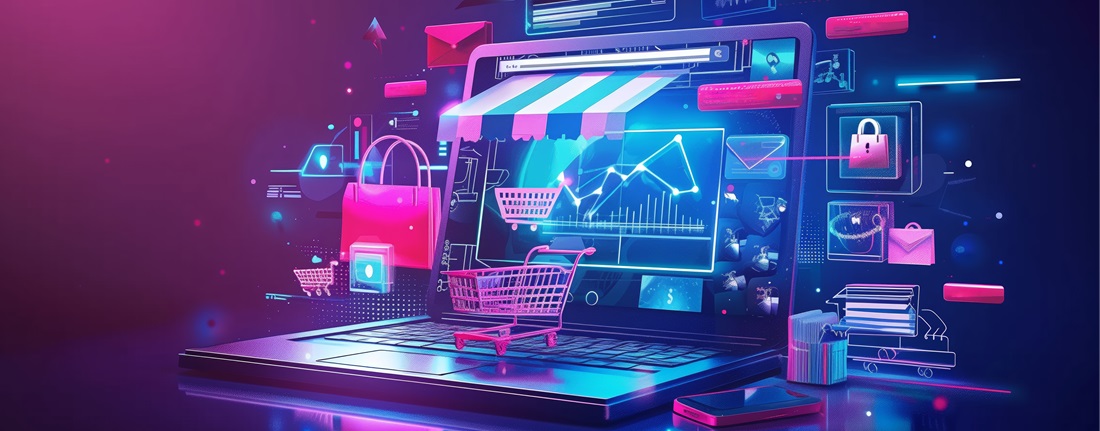Headquartered in Minneapolis, Minnesota, Target Corporation is an American retail company. It operates a chain of discount department stores and hypermarkets. It is the seventh-largest retailer in the United States, offering everything from groceries and essentials to clothing and electronics.
Target Plus is an invite-only program that enables third party retailers to sell their products on Target.com like Amazon, Walmart and Shopify’s e-commerce marketplaces. Target Plus platform provides the ability to integrate with the seller's business software system via EDI. In this post, we’ll explain how businesses can become EDI compliant and meet Target EDI requirements so they can begin selling products through Target stores and Target.com.
Basics of EDI
EDI stands for electronic data interchange and serves as a secure, digital process for sharing important business information between suppliers and buyers. EDI allows businesses to automate the exchange of data in the form of standardized documents. In essence, think of EDI as a common electronic business language that allows suppliers and buyers to quickly and easily communicate with each other.
What Is Target EDI?
Before trade can begin with Target, they ask that suppliers achieve EDI compliance. Target, like most big retailers, already has a well-developed EDI system for trading with suppliers. To reduce workload for both parties, Target ensures that you are equipped with a VAN (Value-Added Network) before sending purchase orders to you. VAN translates Target's orders into a format that your EDI order management system can understand. Once your VAN is set up, you can begin EDI trading with Target.
Target prefers EDI because it trusts the technology to:
- Cuts down on human effort
- Reduces errors
- Lowers storage costs
- Eliminates the need for physical storage
- Saves time on management and transactions
- Let’s managers access data worldwide within seconds.
How Does EDI Data Help Target Suppliers?
EDI helps Target suppliers by providing detailed information about product flow. Suppliers can see the inventory levels at Target stores, which helps them send products as needed to keep shelves stocked. This also allows suppliers to manage their own inventory more efficiently.
1. Target EDI & Data Entry
When you choose an EDI management solution like Infocon Systems, the primary and most important feature is the EDI manager. Infocon Systems’ EDI manager connects directly with your ERP system to make data exchange with Target simple and clear. All documents, like orders, ASNs, and invoices, are available in one place. Purchase orders are automatically updated in Infocon Systems, removing the need for manual entry and reducing errors. Infocon Systems also sends alerts about Target’s updates to avoid mistakes and chargebacks. You can easily send ASNs and invoices back to Target with one click from the same system.
2. Managing Target EDI Orders
Infocon Systems handles large and complex Target orders with ease. Its EDI system creates efficient workflows for tasks like warehousing, picking, packing, labeling, and shipping. By automating routine tasks and organizing all order data in one place, users get full visibility into their orders. This automation improves accuracy, boosts efficiency, increases productivity, and saves costs. Target uses specific EDI codes in all its stores, making it easy for suppliers to access important data. Some of these codes and transactions include:
- EDI 810: Invoice code (inbound & outbound)
- EDI 812: Credits and Debits claims: (outbound)
- EDI 816: Organizations relationship regarding trade and businesses
- EDI 820: Advice related to Remittance
- EDI 850: Purchase orders
- EDI 856: Shipping notices
- EDI 864: Texts and business messages
- EDI 997: Functional Acknowledgement
- EDI 990: Response to Load Tender (inbound)
- EDI 855: Order acknowledgment for purchases (inbound)
Target EDI Connection Types
There are two ways to connect with Target using an EDI interface, both helping to maintain a strong supplier relationship. Learn about these options to choose the best and most secure method for your business.
AS2: AS2 is a communication protocol that enables reliable data transmission over the internet. It establishes a point-to-point connection via the web between client and server computers, using digital certificates and encryption to securely transfer EDI data. Target maintains a direct AS2 connection for ensuring seamless EDI file exchange.
SFTP (Secure File Transfer Protocol): SFTP is used to secure file transfers between a server computer and a client user over the internet.
Target EDI Implementation Methods
Here are two common ways to set up EDI integrations with Target.
1. EDI Service Provider: Using a third-party EDI provider gives you enhanced capabilities. Target can communicate EDI files through SFTP or AS2 connectivity, while the EDI provider handles the data exchange to and from the Target.
2. VAN (Value-Added Network): A third-party private VAN provider helps transfer EDI documents. Suppliers usually need to work with a VAN and set up an EDI order management system.
How Long Does EDI Integration with Target Take?
The time to integrate with Target's EDI system depends on factors like your system setup, the amount of data, and the complexity of the integration. It can take between two weeks and three months. Integration also includes Target's required EDI testing, which usually takes less than two weeks but can go up to six weeks. If testing isn't completed within six weeks, suppliers risk being removed from the EDI testing process.
Best Practices for Successful Target EDI Integration
To ensure a seamless Target EDI integration process along with smooth EDI order processing, it's best to follow these recommended practices:
- Choose a reliable EDI provider with experience working with Target. Ask them detailed questions about their solutions and services to find the best option.
- Collaborate with your EDI provider to make sure your system meets Target's EDI requirements.
- Integrate EDI with your order management system (ERP/CRM) to automatically receive and process orders.
- Regularly review and improve your EDI system to keep up with your business needs and stay compliant with Target’s requirements.
Following these best practices will improve your Target EDI integration, making your operations smoother and more efficient.
Target EDI Integration from the Infocon Systems Experts
Working with major retailers requires efficiency, but without an EDI order management system, handling inventory, orders, communication, and partners can become difficult, reducing the benefits of working with companies like Target.
Infocon Systems makes EDI compliance easy for any business wanting to connect with Target. We offer fully-managed EDI solutions for Target that connect suppliers with their all major ERP systems/accounting packages and Third Party Logistics Centers (3PLs). Our cloud-based EDI process enables you to exchange required business documents to Target with the confidence that your Target compliant EDI transactions are processed with the proper data and unique EDI guidelines. Target EDI integration with Infocon Systems helps you to remove any additional manual processes or errors, minimizing your risk of charge-backs.
To learn more about how Infocon Systems can take care of your EDI needs for Taregt, please don’t hesitate to give us a call at +1 888-339-0722 or email sales@infoconn.com. We’d love to hear from you.




